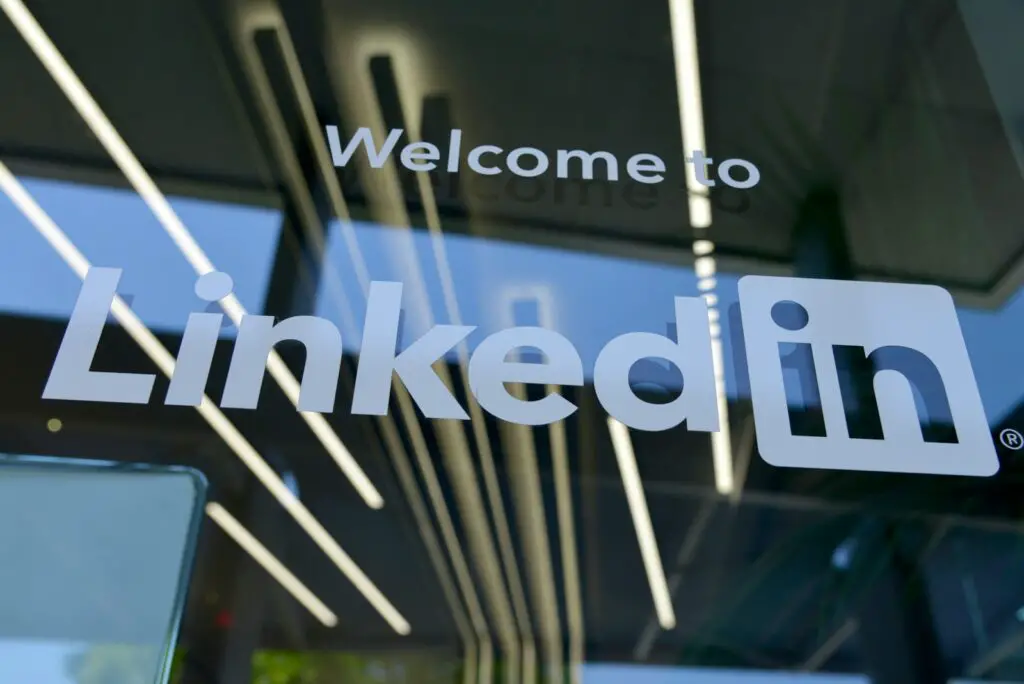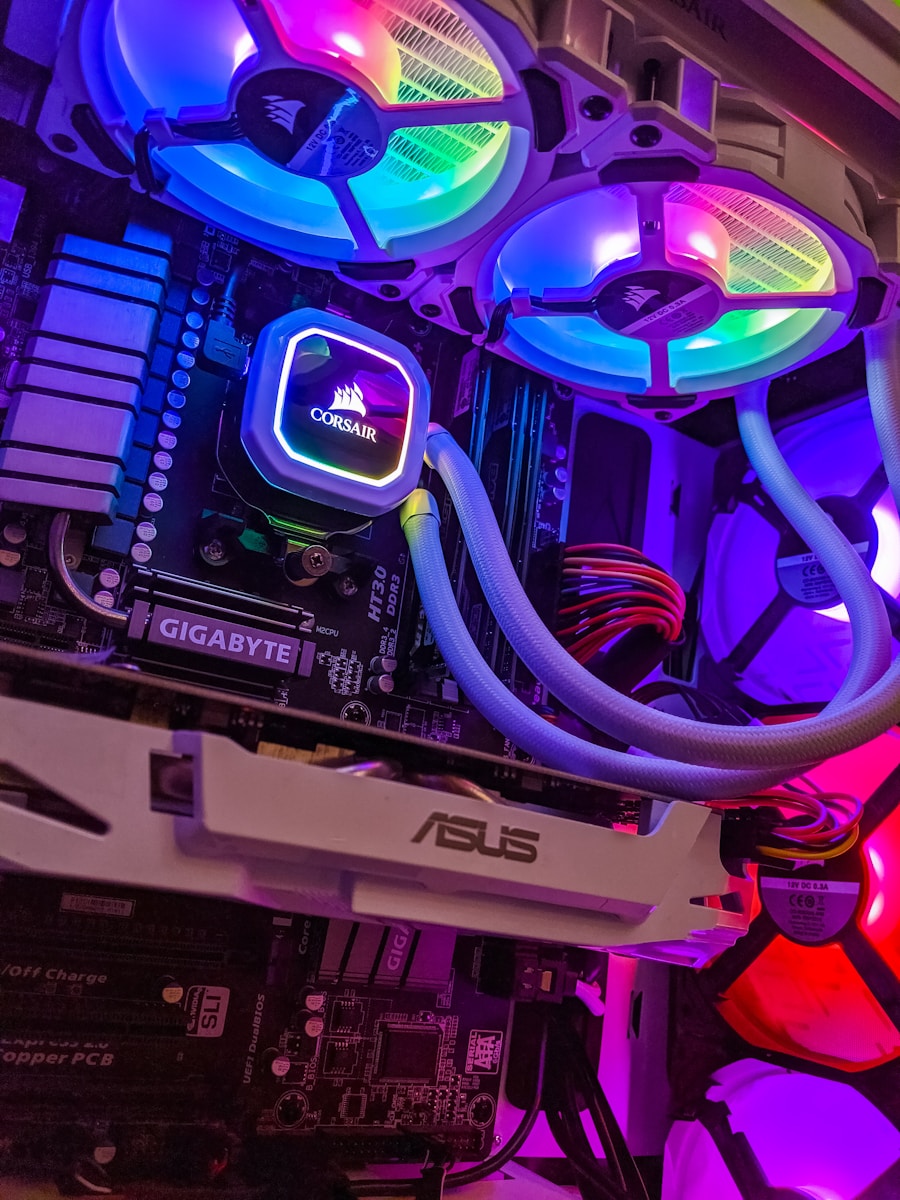Most people believe that the key to success on LinkedIn is engagement—getting as many likes, comments, and shares as possible.
But what if I told you that none of that actually matters when it comes to generating business?
A colleague of mine, who runs a video production company, recently put this theory to the test. He posted a demo reel on LinkedIn.
- It wasn’t controversial.
- It wasn’t a trendy AI or Web3 post.
- It wasn’t a corporate virtue signal.
It was simply a great piece of content showcasing his work.
The result?
- 23 likes.
- 3 comments.
- 3 inbound leads.
- 2 brand-new potential clients.
- 1 past client reminded to hire him again.
Nothing groundbreaking regarding engagement here. But in reality, it worked. It did exactly what it was supposed to do—bring in business.
And that’s where most people get LinkedIn wrong.
They assume that high engagement equals success, when in reality, LinkedIn is just another popularity contest.
The posts that get the most engagement tend to fall into three categories:
- Virtue signaling & activism posts – Designed to stir emotions and attract social validation.
- Gimmicky tech posts – AI, Web3, and whatever’s trending in tech, even if they lack substance.
- Bragging posts – Promotions, career milestones, and humblebrags that attract likes but don’t convert.
LinkedIn’s algorithm doesn’t reward expertise—it rewards engagement bait.
Meanwhile, actual business owners and decision-makers are quietly lurking.
Instead of liking and commenting, they’re:
- Watching.
- Researching.
- Clicking on profiles.
- Making hiring decisions behind the scenes.
If you’re measuring your success by likes and comments, you’re looking at the wrong metrics.
The Silent Buyer Phenomenon

High-level decision-makers and potential clients frequently consume content without interacting publicly.
This behavior is strategic; they prefer to research and evaluate services discreetly before making contact.
In fact, studies have shown that businesses who engage on LinkedIn are 51% more likely to achieve their sales quotas, indicating that active participation leads to better outcomes, even if prospects don’t visibly engage.
Most LinkedIn users assume that engagement—likes, comments, and shares—is the best indicator of success. But the reality is, the people most likely to buy from you are also the least likely to engage.
High-level decision-makers, business owners, and high-ticket clients don’t waste time commenting on posts—they consume content silently while doing their own research.
In fact, only 1% of LinkedIn users create content regularly, while 99% consume it passively.
These silent buyers check profiles, websites, and past work long before they ever reach out. They don’t want their competitors, employees, or current vendors to see them engaging with your content.
Instead, they evaluate in the background and make private buying decisions.
Should You Get LinkedIn Premium to Track Who’s Viewing Your Profile?
It’s a common question: “If buyers are lurking, should I upgrade to LinkedIn Premium to see who’s checking me out?”
For most people, the answer is no.
If a prospect is genuinely interested, they’ll reach out—that’s what matters.
Knowing who viewed your profile doesn’t change the fact that they either take action or they don’t.
Rather than worrying about who’s lurking, focus on what’s converting:
- DMs & inbound leads – The real indicator of interest.
- Website clicks – Silent engagement that signals intent.
- Conversion actions – Are people actually booking calls or taking the next step?
A profile visit means nothing unless it leads to business.
How to Leverage the Silent Buyer Phenomenon
If 99% of users consume content silently, you need to create an ecosystem that moves them toward action even if they never engage publicly.
Here’s how:
- Optimize Your Profile – Make sure it’s clear, compelling, and conversion-ready. A silent buyer should immediately understand what you offer and why it matters.
- Post High-Value Content – Share educational and solution-driven insights that make your audience think, “I need this.” If they see you as a trusted authority, they’ll reach out when the time is right.
- Track the Right Metrics – Stop focusing on vanity engagement and start measuring profile views, website clicks, and inbound messages.
- Curate Your Network – It’s not about having more connections—it’s about the right connections. If your network is full of the wrong people, your content won’t reach decision-makers.
This leads directly into the next critical piece: curating a high-value LinkedIn network that actually converts.
Cultivating the Right LinkedIn Network: Quality Over Quantity

Cultivating a high-quality LinkedIn network is essential for professionals seeking meaningful engagement and business opportunities. While it’s tempting to amass a large number of connections, the true value lies in the relevance and quality of your network.
Quality Over Quantity
It’s a common misconception that a larger network equates to greater influence or success on LinkedIn. However, less than 1% of LinkedIn users have over 10,000 connections, emphasizing that vast networks are rare and not necessarily indicative of professional success.
For instance, if you run a video production company, your LinkedIn network should strategically include:
- Business Owners & Decision-Makers: Potential clients who require video production services.
- Marketing Professionals: Individuals managing content budgets and campaigns.
- Industry Talent & Collaborators: Editors, sound engineers, and other professionals you might partner with.
Assessing Your Network’s Effectiveness
To determine if your LinkedIn network is serving your professional goals, consider the following:
- Engagement from Target Audience: Are your posts attracting views or messages from business owners or marketing leads?
- Quality of Conversations: Do your LinkedIn interactions lead to meaningful discussions or potential collaborations?
- Inbound Opportunities: Are you receiving unsolicited inquiries or leads relevant to your services?
Strategies for Building a Robust LinkedIn Network
Enhance the quality of your LinkedIn connections with these approaches:
- Regularly Audit Your Connections: Remove or unfollow individuals who don’t align with your professional objectives.
- Be Intentional with New Connections: Before connecting, assess whether the individual could be a potential client, collaborator, or valuable contact.
- Engage with Relevant Content: Interact with posts from your target audience to increase your visibility within the right circles.
- Initiate Genuine Conversations: Reach out with personalized messages that foster authentic relationships, rather than immediate business pitches.
By focusing on cultivating a network rich in quality connections, you position yourself for more meaningful engagements and professional growth on LinkedIn.
Guide to a LinkedIn Content Strategy That Attracts Leads (Not Just Engagement)

Step 1: Shift Your Focus from Engagement to Conversions
Most LinkedIn users focus on maximizing engagement—but likes, comments, and shares don’t pay the bills.
If your goal is to generate leads, sales, and business growth, you need to approach LinkedIn differently.
Stop posting for vanity metrics. Avoid:
- Trying to go viral with gimmicky content that attracts attention but not clients.
- Writing long opinion-based posts that spark discussions but don’t generate leads.
- Posting career milestones that get likes from colleagues but don’t move prospects to take action.
Start posting for lead generation.
Instead, focus on content that builds trust, demonstrates expertise, and moves people toward a buying decision.
What Type of Content Actually Converts on LinkedIn?
Not all LinkedIn content performs the same when it comes to generating business. Video content, especially demo reels and case studies, significantly outperforms text-based posts in driving action.
🔹 Video posts on LinkedIn drive 5x more interaction than text-based posts.
🔹 Video generates 1.4x more engagement than other content formats.
🔹 Executives are 75% more likely to watch a video than read a blog post.
This aligns perfectly with what happened to my colleague. He posted a demo reel showcasing his video production work. It wasn’t a trendy topic or a viral gimmick—it was simply a great piece of content demonstrating his expertise.
Despite low engagement, the post delivered real business results.
If you want to attract leads instead of just likes, here’s what you should be posting:
Content Types That Drive Conversions
1. Demo Reels & Case Studies – Show potential clients what’s possible by highlighting real results.
- Example: “How we helped [Client Name] increase conversions by 250% with strategic video content.”
2. Industry-Specific Insights – Share niche knowledge that directly speaks to your ideal client’s challenges.
- Example: “Why 90% of corporate videos fail—and how to ensure yours gets results.”
3. Behind-the-Scenes Content – Showcase your process, expertise, and attention to detail.
- Example: “On set today with [Company Name]: Here’s how we bring a brand’s story to life.”
4. Solution-Driven Content – Address common pain points and position yourself as the solution.
- Example: “Struggling to get engagement on your LinkedIn videos? Here’s what’s missing.”
5. Value-Driven Lead Magnets – Offer free, high-value resources that capture leads.
- Example: “Want a content strategy that guarantees ROI? Download my free guide.”
Pro Tip: Rotate Between These Content Types for Maximum Impact
To make this strategy sustainable, use a structured content calendar to ensure consistent posting.
- Week 1 – Demo Reel or Case Study (Show results)
- Week 2 – Industry Insight (Educate & position yourself as an expert)
- Week 3 – Behind-the-Scenes (Build trust)
- Week 4 – Lead Magnet Offer (Capture leads)
This ensures you’re consistently delivering value while also moving people toward conversion.
Step 2: Build a LinkedIn Lead Gen Funnel That Works (Without Ads)
Once you have the right content strategy, you need a system to turn silent engagement into actual business.
Here’s how to do it:
The 5-Step LinkedIn Lead Gen Funnel
1. Post Strategic Content Regularly
- Create content that educates, solves problems, and showcases expertise.
- Use the content calendar framework outlined above.
2. Monitor Profile Views & Website Clicks
- If a key prospect views your profile or clicks your website, that’s a buying signal.
- Use LinkedIn Analytics to track profile visits and direct messages.
3. Optimize Your Profile & Website for Conversions
- Your profile should clearly state who you help and how.
- Include a strong CTA (e.g., “Book a call,” “Download my free report”).
- Your website should reinforce your expertise and make it easy for visitors to take action.
4. Offer a Clear Next Step
- Every post should guide readers toward an action—not just awareness.
- Examples:
- “DM me if you want a free content audit.”
- “Grab my free checklist for creating high-converting video content.”
5. Engage with Potential Clients Strategically
- Comment on your target audience’s posts to get on their radar.
- If someone views your profile multiple times, send a non-salesy DM.
Example of a Non-Salesy DM
🚫 Wrong Approach:
“Hey [Name], I saw you checked out my profile! Are you interested in video production services?”
✅ Right Approach:
“Hey [Name], I saw you checked out my profile. Appreciate the visit! Are you working on any upcoming content projects?”
This opens a conversation naturally rather than forcing a sale.
Optimize Your Profile for Maximum Conversions
Your LinkedIn profile isn’t a résumé—it’s a landing page. If silent buyers check your profile but don’t take action, it’s not optimized properly.
Here’s how to make your profile work for you:
🔹 Headline:
Instead of just listing your job title, write a value-driven headline.
❌ “Video Producer at [Company Name]”
✅ “Helping B2B Brands Generate $50K+ in Video ROI | Video Production That Converts”
🔹 About Section:
Structure it in a problem-solution format:
- The Problem: “Most businesses waste money on video content that doesn’t convert. Here’s why.”
- The Solution: “I help brands create strategic, ROI-driven video campaigns that generate measurable results.”
- The Call-to-Action (CTA): “Need a video strategy that works? Let’s talk.”
🔹 Featured Section:
Most people ignore this section, but it’s a prime opportunity to showcase:
- Demo reels
- Case studies
- Lead magnets
- A direct ‘Book a Call’ link
🔹 Experience Section:
Instead of just listing job descriptions, highlight client success stories.
❌ “Edited videos for clients.”
✅ “Created a video campaign for [Client Name] that led to a 30% increase in conversions.”
🔹 Call-to-Action in Contact Info:
If a prospect visits your profile and doesn’t know what to do next, you lose them.
Make it easy by adding:
- A Calendly link to book a call
- Your website
- A DM invite
Key Takeaway: Your profile should make silent buyers take action. If they click but don’t convert, you’re missing opportunities.
Step 3: Track the Right Metrics (Ditch Vanity Metrics)
Forget about likes and comments—here’s what really matters:
Profile Views → Indicates silent interest.
Direct Messages → Private conversations = real potential leads.
Website Clicks → People researching you behind the scenes.
Conversion Actions → Are people booking calls, filling out forms, or downloading resources?
These are the real indicators that your LinkedIn content is attracting buyers.
What If I’m Not Seeing Results? (Common LinkedIn Strategy Objections)
If you’ve tried posting on LinkedIn but haven’t seen results yet, you might be wondering:
“What if I still want to grow my engagement?”
Engagement isn’t bad, but it should be a byproduct of valuable content—not the goal. High engagement without a clear offer won’t generate leads.
“What if I post regularly but don’t get inbound leads yet?”
Ask yourself:
- Am I posting the right content? (Case studies, insights, behind-the-scenes, and lead magnets)
- Is my profile optimized? (If people click and leave, something’s missing.)
- Am I engaging with the right audience? (Commenting on decision-makers’ posts gets you visibility.)
“What if I don’t have a demo reel?”
Not every business has polished video content, but you can still showcase your expertise with:
- Before-and-after case studies
- Client testimonials
- Industry insights that highlight your knowledge
“What if I don’t have time to post every week?”
Batch your content. Set aside one day a month to:
- Write 4 posts in advance
- Schedule them using a LinkedIn scheduling tool
- Spend just 10 minutes per day engaging with key connections
“What if I get inbound leads, but they’re not the right clients?”
That means your messaging or network needs refining. Ask:
- Am I attracting the right industry?
- Is my offer clear enough?
- Does my content filter out unqualified leads?
Final Thoughts: Stop Chasing Engagement, Start Attracting Leads
Most LinkedIn users are focused on winning the popularity contest.
But business leaders don’t care about vanity metrics. They care about who can solve their problems.
To stand out, you need to:
- Post content that builds authority and drives action.
- Optimize your LinkedIn profile and website for conversions.
- Turn profile lurkers into leads through smart engagement.
When you stop chasing engagement and start building a lead gen system, LinkedIn becomes one of the most powerful business growth tools available.
Conclusion: The LinkedIn Lead Generation Blueprint

Most LinkedIn users focus on the wrong metrics. They chase likes, comments, and shares, believing engagement equals business success.
But as we’ve seen, the real buyers are silent. Decision-makers don’t engage publicly—they research, evaluate, and make buying decisions behind the scenes.
If your LinkedIn strategy is based on getting more engagement, you’re playing the wrong game.
Posting without a strategy won’t bring in leads.
❌ If your profile isn’t optimized, silent buyers will visit and leave.
❌ If you’re posting for engagement, you’re attracting the wrong audience.
❌ If you’re not tracking profile views & website clicks, you’re missing potential leads.
The good news? You don’t need viral posts to win on LinkedIn. You need a system that attracts, nurtures, and converts silent buyers into clients.
Here’s the blueprint for success on LinkedIn:
Optimize your profile → Your profile should convert profile lurkers into leads.
Post the right content → Case studies, demo reels, insights, and solution-driven content.
Track the right metrics → Focus on profile views, DMs, and website clicks, not likes.
Curate the right network → A few decision-makers are worth more than 1,000 random connections.
Engage smartly → Commenting on the right posts gets you seen by the right people.
Take 2 minutes right now and ask yourself:
- Is my LinkedIn profile optimized to convert silent buyers?
- Am I posting content that attracts leads, not just likes?
- Am I tracking profile views, website clicks, and inbound leads?
If not, it’s time to fix your LinkedIn strategy.
Get a custom free report on how to position your brand for real business growth. Stop chasing engagement—start attracting high-value clients.
Click here to get your free content strategy report.
Final Thoughts
This isn’t about “hacking” LinkedIn—it’s about understanding how business owners make decisions. When you stop chasing engagement and start focusing on what actually converts, LinkedIn becomes a powerful lead-generation tool.
🚀 The decision is yours:
📢 Compete for engagement… or
💰 Position yourself for real business.
Which one will you choose?




